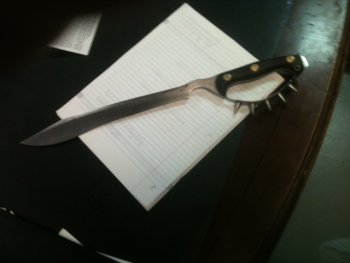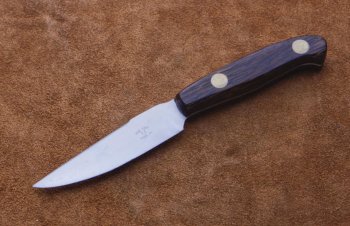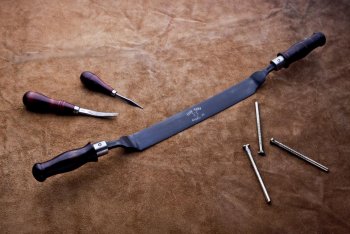George, Tactically Sharp, was nice enough to photo 6 and 7 for me. #5 is phone photo. Added #5 as an after thought.
5-
6- O1, Black Palm handle, homemade brass Loveless bolts.
O1, Black Palm handle, homemade brass Loveless bolts.
7- 5160, Oak handles, SS ferrules.
5160, Oak handles, SS ferrules.
Thanks,
Fred
PS # 5 turned into a large knife shaped object. Has a cracked blade.
PPS-#6 is his as soon as I make a sheath for it.
5-

6-
 O1, Black Palm handle, homemade brass Loveless bolts.
O1, Black Palm handle, homemade brass Loveless bolts.7-
 5160, Oak handles, SS ferrules.
5160, Oak handles, SS ferrules.Thanks,
Fred
PS # 5 turned into a large knife shaped object. Has a cracked blade.
PPS-#6 is his as soon as I make a sheath for it.
Last edited:
